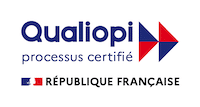The selection criteria, the range of solutions made possible by technology and know-how, discourage even the most motivated. And yet, if you have the right guide, you can find your way through this jungle.
Choosing a CRM solution means first and foremost addressing three key issues:
- Firstly, to meet business challenges, i.e. to support the roll-out of sales policy, improve customer knowledge, develop new processes to support customer relations, effectively integrate customer data, etc.
- Then integrate historical data and anticipate future developments, i.e. be sustainable and compatible with the existing information system,
- Finally, respect the budget and schedule, in other words, stay consistent with your real needs.
So how can you meet this challenge and choose the best solution while respecting your constraints?
Best practice suggests organizing a call for tenders on the basis of a complete set of specifications. However, this is already an investment in time (and therefore money), which will mobilize resources for drafting, distributing, evaluating and selecting candidates. This is not always compatible with cost and deadline constraints.
What's more, the number of solutions available on the market makes things even more complex (220 solutions listed in 2013). Between generalist solutions that are more or less open, innovative challengers, cutting-edge specialists, or even safe bet solutions that aren't necessarily finely tuned to your specific needs, you may be forced to make a very broad call for tenders, or make choices that limit the relevance of the responses.
In our opinion,there are solutions that meet your specific needs (functional and technical), your context (knowledge of the business, size of the company) and with which you'll want to move forward.
The best solution on the market in terms ofexisting comparative analysesis not necessarily the most effective for you. The best solution doesn't exist in absolute terms: it's relative to your own situation.
That's why we've built the Quick Choice © CRM approach, based on a benchmark of the 20 most relevant CRM solutions on the market , and a database updated every year. It meets two objectives:
- Formalize a CRM requirements expression based on our 300-item functional map,
- Automatically filter your best short list from all existing solutions.
Over a period of 2 to 5 days, and based on workshops with business teams, we gather your expectations and needs (from the most common to the most specific), using our exclusive "CRM Functional Map" tool, reviewing over 300 functional items.
These workshops are also opportunities for discussion, during which we show you the possibilities offered by CRM solutions, challenge your needs, and help to develop your vision of CRM usage.
To identify the most suitable CRM solutions, we use our knowledge base, which is updated every year and includes more than 20 tools. So, by comparing our ratings with the levels of expectation expressed in the workshops, you can be sure of having a shortlist of relevant solutions.
The final choice is always made on the basis of suitability for the project team, budget and ergonomics, which results in more than convincing feedback: 100% of our short-list candidates propose a suitable solution!
To find out more about CRM and to help you with your projects, find all our methods and tools here :


